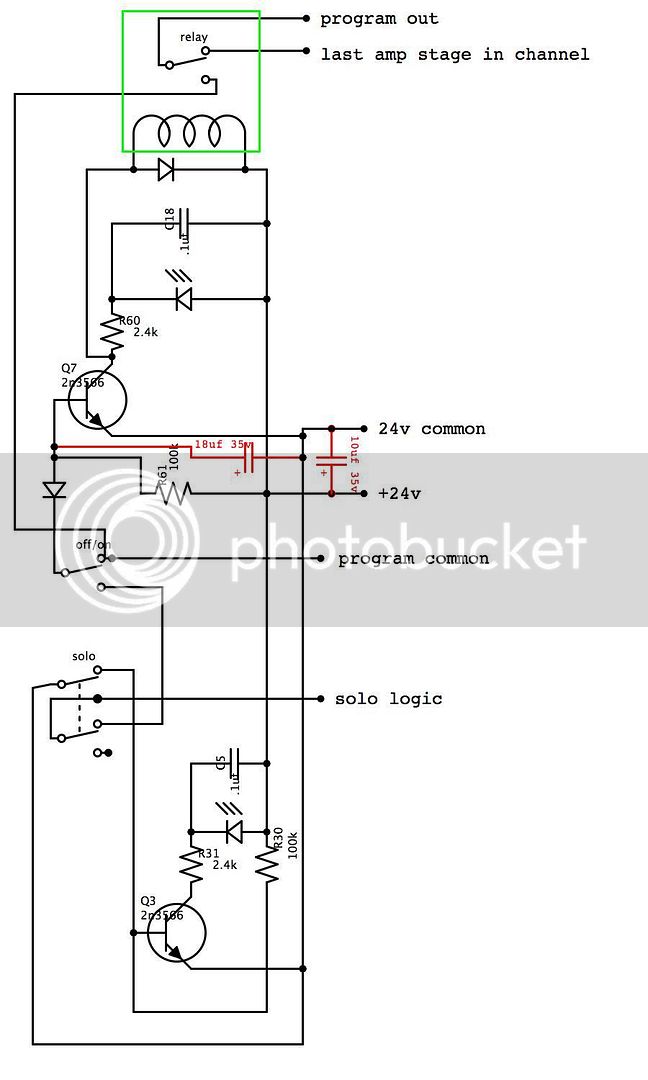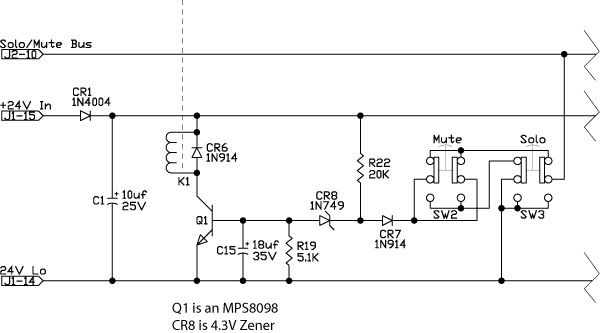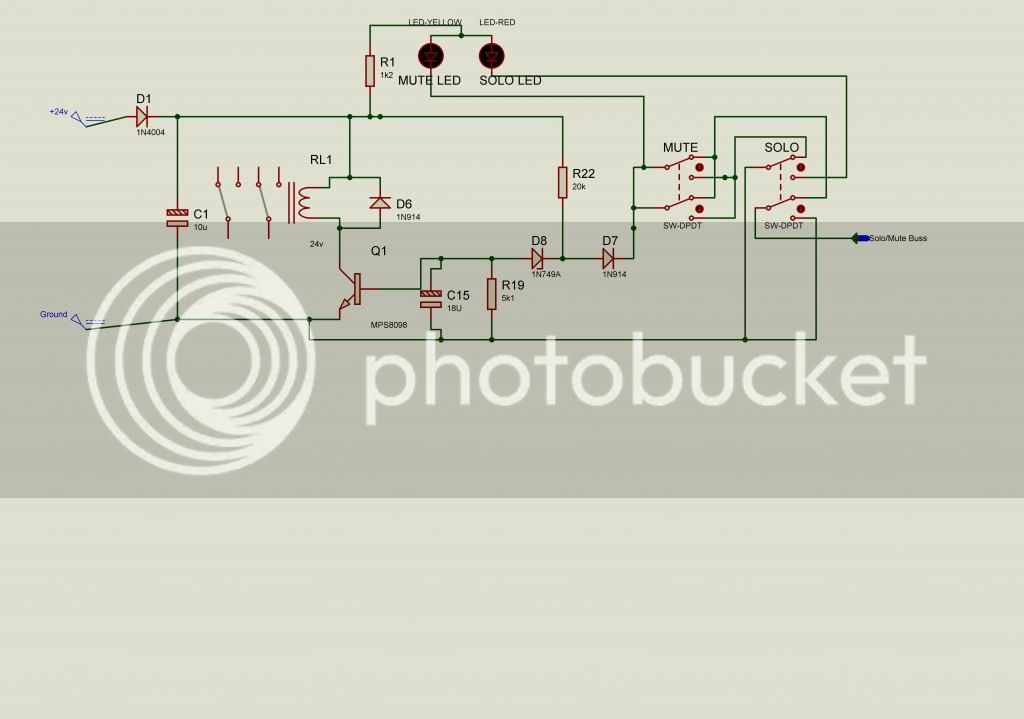The circuit was part of the input module, and my recollection is that it drove the channel fader directly, there was no significant amount of intervening cable. By itself, the uA739 doesn't have a particularly ballsy output, so the buffer just serves to raise its current capability. API also had the habit of a certain amount of overkill, and I'd just call this circuit evidence.
I think that history vindicates them for the overkill.
Remember that although my circuit doesn't blatantly show it, the original used a uA739 dual opamp, which is externally compensated, and there was a place for input compensation as well as around the output stage. The compensation components are noted in the "Notes" part of the schematic. I used TL082s in the drawing because the schematic symbol was available and because I was far too lazy to create a new symbol for the 739. TL082s weren't even a glimmer in someone's eye in 1972.
I think that history vindicates them for the overkill.
Remember that although my circuit doesn't blatantly show it, the original used a uA739 dual opamp, which is externally compensated, and there was a place for input compensation as well as around the output stage. The compensation components are noted in the "Notes" part of the schematic. I used TL082s in the drawing because the schematic symbol was available and because I was far too lazy to create a new symbol for the 739. TL082s weren't even a glimmer in someone's eye in 1972.
tv said:It's obvious that C11 is "compensating" for something, but for what exactly? The fact that the C9 isn't directly in UA1s FB path (ie connected to pin1 instead of the output Q's emitters) seems odd as well - if output is shorted or driving some cable's capacitance this would seem odd regarding that the whole circuit otherwise seems of "baroquesque" proportions. Designers surely have accounted for thet scenario. But, "they" surely know why it is as it is.






